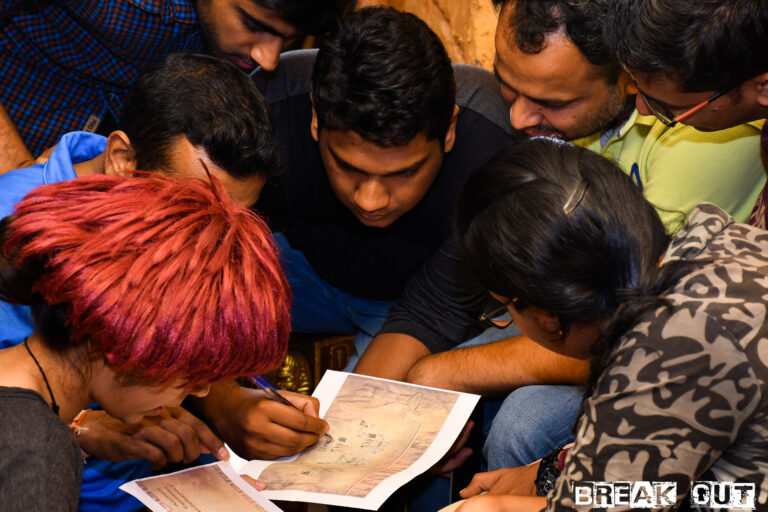
What is Team Building?
Team building is a strategic process focused on strengthening team bonding and interactions among individuals within a group to improve overall collaboration and performance.
It involves a series of planned activities, exercises, and workshops designed to foster better communication, trust, and understanding among team members.
By encouraging team members to work together, share experiences, and tackle challenges collectively, team building aims to create a cohesive team and supportive environment where everyone feels valued and contributes to the team’s success.
Recommended Read: 15 Engaging Team Building Activities to Strengthen Team Dynamics
Effective team building can have numerous benefits for an organization. Like:
- It enhances team morale and motivation, leading to increased productivity and efficiency. When team members feel a sense of camaraderie and have a clear understanding of their roles, they are more likely to be committed to the team’s goals.
- Moreover, team building activities help identify and address potential conflicts or communication barriers, allowing teams to overcome challenges more effectively and work towards achieving common objectives.
What Makes Team Building (TB) Effective?

Clear Objectives:
Having specific goals and objectives for each team-building activity helps focus the efforts and ensure desired outcomes.
Immersion and Fun:
Creating an immersive and enjoyable experience in team-building activities enhances engagement, reduces resistance, fosters positive emotions, and strengthens team bonds. The element of fun also contributes to better memory retention and stress reduction, leading to enhanced creativity and problem-solving skills among team members.
Active Participation:
Encouraging active engagement and participation from all team members fosters collaboration and strengthens the impact of the activity.
Relevant and Meaningful:
Designing team-building activities or corporate team outings that are meaningful and relevant to the team’s goals, challenges, and work environment increases their effectiveness.
Reflection and Feedback:
Providing opportunities for reflection and feedback after each team-building activity allows team members to learn from the experience and apply insights to their work.
Checklist for Team Building (TB):

- Clearly defines the objectives and desired outcomes.
- Select activities that align with the team’s needs and goals.
- Determine the appropriate number of participants and form a team accordingly.
- Ensure the availability of required equipment and materials.
- Set a realistic duration for each activity.
- Communicate the rules and guidelines of the activity clearly.
- Facilitate effective communication and encourage active participation.
- Provide opportunities for reflection and feedback.
- Follow up on the activity’s outcomes and track progress.
Team Building and its Effect on the Organization’s Culture:
The culture of an organization refers to the shared values, beliefs, norms, and behaviors that shape its work environment and define the interactions among its employees. Team building plays a pivotal role in shaping and influencing the culture of an organization.
When team-building initiatives are prioritized, it fosters a sense of community and unity among employees. A positive team-building experience promotes open communication, trust, and cooperation, leading to a more collaborative and supportive work environment.
As teams bond and align around common goals, a strong sense of camaraderie and mutual respect is cultivated, creating a positive and motivated workplace culture. In turn, this positive culture can lead to higher employee engagement, increased productivity, and a more cohesive and successful organization as a whole.

Enhancing Communication and Collaboration:
Team building fosters effective communication and collaboration, improving teamwork and problem-solving skills.
Developing Leadership Skills:
Some activities allow team members to take on leadership roles and develop their leadership capabilities.
Promoting Adaptability and Resilience:
Team building challenges can expose teams to new situations and foster adaptability and resilience in a dynamic business environment.
Strengthening Organizational Culture:
Team building activities aligned with core values and organizational culture helps reinforce a positive work environment and shared vision.
Tuckman's Stages of Group Development
Tuckman’s stage of group development is a well-known model that describes the phases through which groups progress as they become more cohesive and productive. Developed by psychologist Bruce Tuckman in 1965, the model consists of four main stages: Forming, Storming, Norming, and Performing.
1. Forming:
In the forming stage, a group is newly brought together, and members are excited but unsure about their roles. Individuals focus on themselves and may be hesitant to share ideas. Team leaders play a crucial role in providing direction and setting initial norms.
2. Storming:
During the storming stage, conflicts and disagreements may arise as the group starts working together. Power struggles and interpersonal issues emerge as members seek their place within the team. Addressing these challenges is vital to establish trust and cohesion.
3. Norming:
The norming stage sees the group overcoming conflicts and developing cohesion. Shared norms, values, and standards are established, fostering collaboration and teamwork. Trust among team members deepens, leading to open communication and a positive work environment.
4. Performing:
In the performing stage, the group operates with high productivity and effective teamwork. Trust and autonomy peak, enabling members to make independent decisions and achieve shared goals. The focus shifts from managing conflicts to achieving results.
5. Adjourning or Mourning:
Tuckman added an additional stage, “Adjourning” or “Mourning,” where the group disbanded or reflected on its accomplishments after completing its task. This acknowledges the temporary nature of some groups and the need to celebrate achievements before moving on.
Understanding these phases allows leaders and team members to navigate dynamics effectively, promoting a collaborative and successful team environment. By recognizing the challenges and opportunities each stage presents, teams can mature and achieve their objectives, fostering a positive and cohesive work culture.
How do Breakout® Escape Rooms help in Team Building?

Breakout® escape rooms are highly effective in team building due to the following reasons:
Promotes Communication:
To succeed in a breakout® escape room, team members must communicate effectively. They need to share information, ideas, and observations to solve puzzles and challenges. This fosters open communication among team members and helps break down communication barriers.
Encourages Collaboration:
Escape rooms require teamwork and collaboration to solve complex problems. Participants must work together, combining their strengths and skills, to achieve a common goal. Collaboration is essential for success, and this experience translates directly to the workplace.
Strengthens Problem-Solving Skills:
Escape rooms present a series of puzzles and challenges that require critical thinking and problem-solving. Teams must analyze information, think creatively, and adapt their strategies as they progress. These problem-solving skills are transferable to real-life work scenarios.
Builds Trust and Cohesion:
As team members work together to overcome challenges, trust naturally develops. They learn to rely on each other’s abilities, leading to increased team cohesion and camaraderie.
Identifies Leadership Qualities:
In escape rooms, leaders may emerge who take charge and delegate tasks. Observing such behaviors helps identify potential leaders within the team.
Encourages Time Management:
The limited time frame in escape rooms forces teams to manage their time wisely. Participants learn to prioritize tasks, make quick decisions, and stay focused under time pressure.
Fosters Creativity:
Escape rooms often require “out-of-the-box” thinking to solve puzzles. This encourages participants to tap into their creativity and explore unconventional approaches.
Deals with Adversity:
Teams may encounter setbacks or moments of frustration in escape rooms. This experience helps them learn to handle adversity, maintain a positive attitude, and persevere through challenges.
Improves Team Morale:
Successfully completing an escape room challenge boosts team morale and instills a sense of accomplishment. Positive experiences like these contribute to a more positive and motivated team atmosphere.
Provides Constructive Feedback:
After the escape room activity, teams usually engage in debriefing sessions. These sessions allow participants to discuss their performance, strengths, and areas for improvement, promoting a culture of continuous learning and growth.
Fun and Engaging:
Team-building activities should be enjoyable to encourage active participation. Breakout® Escape rooms provide an exciting, personalized, and immersive experience that keeps participants engaged throughout the activity.
Create a Welcoming Environment:
The breakout® escape room set a positive and inclusive tone by creating a welcoming and comfortable space for team-building activities.
Encourage Reflection and Learning:
Incorporate debriefing sessions after activities to allow team members to reflect on their experiences, share insights, and extract lessons learned.
Transferable Skills:
The skills developed during an escape room challenge, such as communication, collaboration, problem-solving, and time management, are transferable to the workplace, enhancing overall team performance.
Overall, breakout® escape rooms in Bangalore offer a holistic team-building experience that addresses various aspects of effective teamwork, leading to improved communication, collaboration, and problem-solving skills among team members. This escape room also offers a virtual escape room and virtual team building experience as well, so the team can enjoy the comfort of their home.
FAQs:
What are the 4 Cs of team building?
The 4 C’s of team building are Communication, Collaboration, Conflict Resolution, and Camaraderie.
What are 5 team building activities?
1. Trust fall 2. Escape room challenge 3. Blindfolded obstacle course 4. Two truths and a lie 5. Group art project
How do you build a successful team?
Building a successful team involves aligning clear goals, fostering open communication, recognizing individual strengths, promoting collaboration, and providing support and feedback.
What are the 5 Cs of a good team member?
The 5 C’s of a good team member are Competence, Communication, Cooperation, Contribution, and Commitment.

Connect
With Us Now


